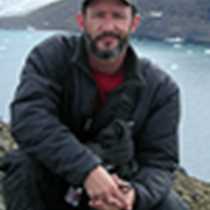West Falkland
After the hustle and bustle of Stanley, the National Geographic Explorer made her way to the remote outer islands off of West Falkland. Our first stop was at Carcass Island, named for the H.M.S. Carcass, which used to patrol the area. Just below settlement (the name for any structures on an island) there were numerous bird species to view including: upland and kelp geese, steamer ducks, pintails, crested ducks, Magellanic penguins and the always entertaining Johnny Rook or caracara. Many of those who walked the pasture lands also had amazing looks at meadowlarks, tussock birds, oystercatchers, wrens, and snipe. While the species list was growing quickly, we are always on the lookout for another eating opportunity, so we ventured to settlement to enjoy a wonderful morning tea with many varieties of cakes and cookies.
During lunch the ship repositioned farther south to New Island. The last walk on this journey in our boots over the low saddle in the middle of the island led us to the incredible sight of soaring black browed albatrosses. They were coming back to the nest to find very large chicks clamoring for regurgitated squid and fish. The chicks, almost the size of the parents but not able to fly yet, dominated the scene with their down flying off in the wind to reveal their adult plumage underneath. Many rockhopper penguins stood quietly between the albatross nests, some waiting to molt their feathers others just resting after a long climb up the steep quartzite cliff. Numerous shags were feeding their chicks as they are also at the end of their breeding season.
There has been a great deal of wildlife on this voyage around the Scotia Sea; from Antarctica to South Georgia and then to the Falklands. Today was a great end to our land experience with the incredible abundance of animals here in the Southern Ocean.




